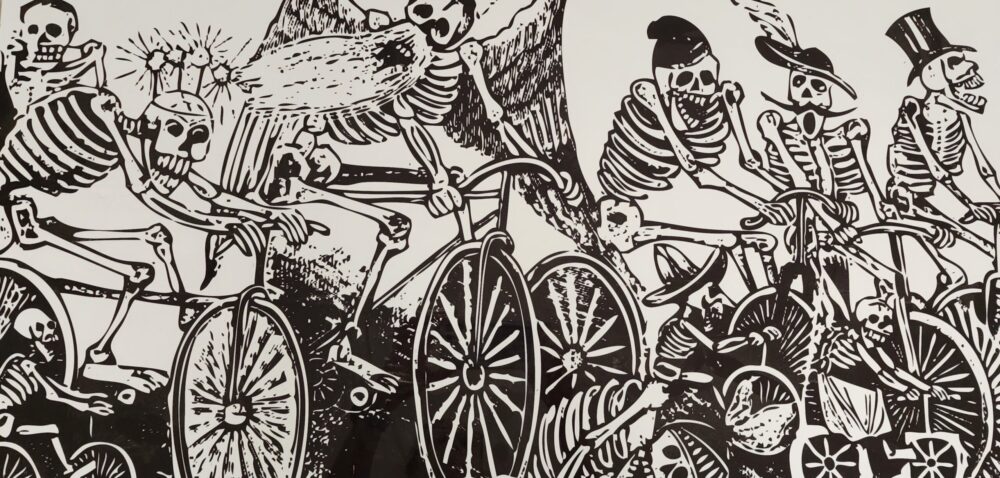In April and again in June people using multi-use paths in Santa Fe that cross Rail Runner tracks rode out into the path of an oncoming train. These two individuals died. These multi-use paths have no safety arms or warning lights of their own.
On the other hand, people using city streets in Santa Fe while (typically) driving motor vehicles, encounter warning lights and arms specifically designed to stop them from driving into the path of the very same trains.
No one questions the presence of these safety devices on streets or highways. Departments of Transportation across the country realize that people need help in avoiding these collisions. Rail Runner/street crossings that don’t have arms or warning lights have been sites of motor vehicle/train crashes elsewhere in the State (between Los Lunas and Belen). Pedestrians have been killed at other unmarked crossings in Bernalillo County.
When considering multi-use paths, it isn’t accurate to think only cyclists use them. Path users routinely include children, elderly, disabled people, or those without the means or inclination to drive a motor vehicle. They also include those crazy enough to exercise outdoors – cyclists, runners, walkers, roller bladers, etc.
Are any of us really comfortable saying that this diversity of path users should be held to a higher personal standard for their safety at a track crossing compared to motor vehicle drivers? Said another way;
Why not protect all road and path users equally?
A website devoted to train track crossing safety posted A motorist is almost 20 times more likely to die in a crash involving a train than in a collision involving another motor vehicle. Comfortably, I’ll say that the likelihood of a path user dying from being hit by a train is even higher.
These crashes are always difficult to understand. What are people thinking? How can they not see or hear the train? Both the recent victims of bicycle/train collisions lived in Santa Fe. How could they not know about the trains!?
You might think that the closer we are to home the more familiar we are with potential hazards, like on-coming trains, and the better we would be at avoiding those hazards. If you do think that, think again. According to the National Highway Traffic Safety Administration (NHTSA) at U.S. DOT:
Three out of four crashes occur within 25 miles of a motorist’s home. Fifty percent of all crashes occur within five miles of home.
What this says to me is that people are, well, people. We make mistakes. We get comfortable with what is the most familiar and sometimes that lets us drop our guard. While this can be a good thing in an interpersonal relationship, it isn’t so good with respect to traffic safety.
As people, we are all quite susceptible to falling into that zoned out, less observant state of mind. I feel that equal protection from our own potential foibles is in order, no matter how we choose to be mobile on a given day.
I just can’t advocate for separate but unequal.
